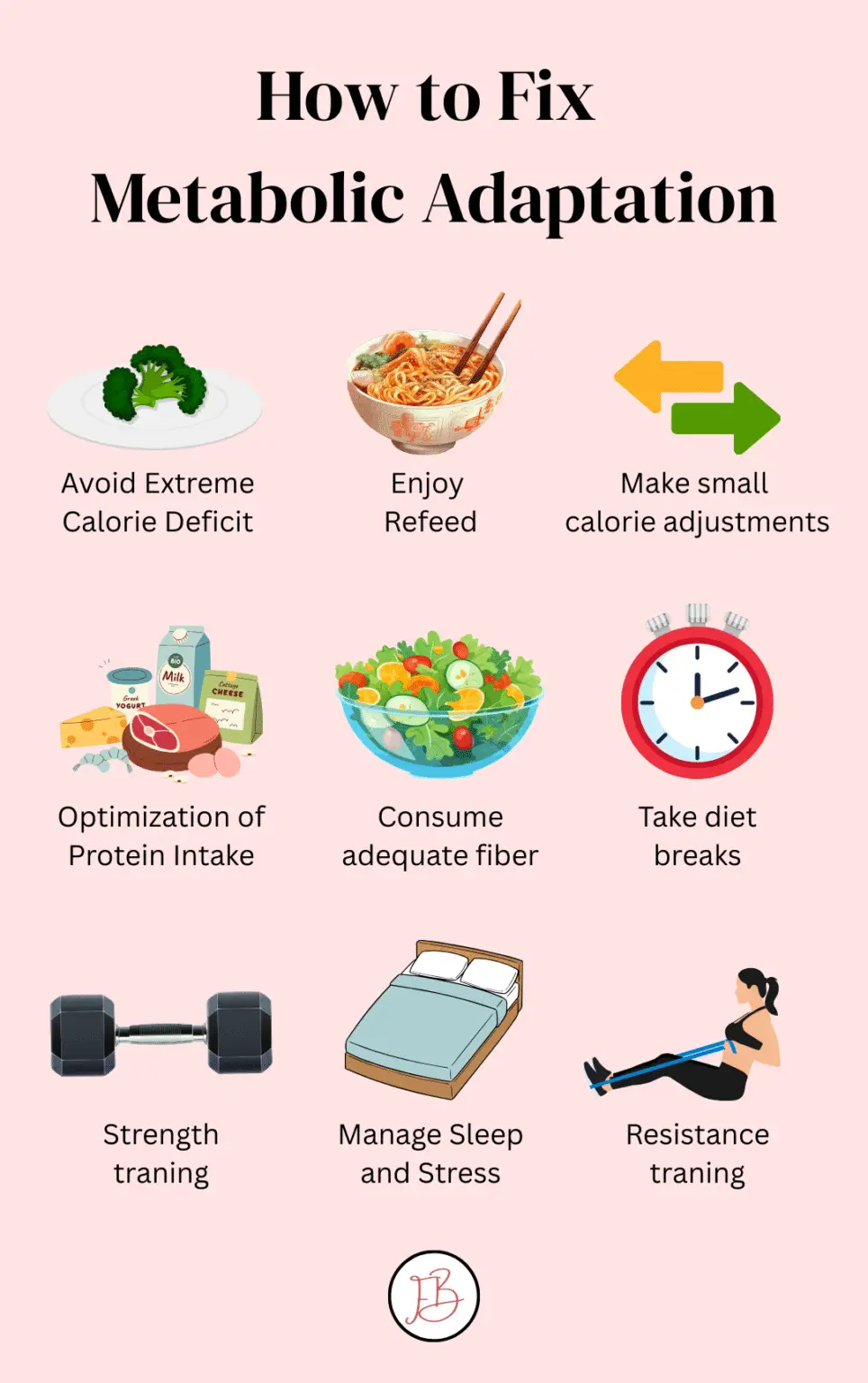You’ve been doing the job. The exercises are constant, and you’ve been aware of your dietary habits. The first improvement was fantastic, but since the scale hasn’t moved. It may be really disheartening when your weight reduction journey comes to a halt, even if you believe you are doing everything correctly. This because of phenomenon called metabolic adaptation?

What Exactly is Metabolic Adaptation?
Your body is extremely clever and adaptive. When you continuously cut your calorie intake, your system detects the change and gradually adjusts to become more efficient with the energy it has. This is not an indication of a “broken” metabolism, but rather your body’s natural need to maintain balance (1)(2).
It is your body’s clever technique of changing its energy expenditure in reaction to changes, particularly a constant calorie deficit, such as when you are attempting to lose weight. Imagine your body as a highly tuned mechanism always searching for homeostasis. When you regularly give it less fuel (calories), it gets more efficient at utilizing what it has.
Metabolic Adaptation and Metabolism
Each of the processes that take place inside every cell and provide the body energy is referred to as metabolism. It is made up of 4 components (3)(4).
- Basal Metabolic Rate (BMR): Which is the number of calories your body burns at rest to maintain basic functions approx. 70% of total daily energy expenditure.
- Thermic Effect of Food (TEF): Approximately 10% of your daily energy expenditure is used to digest, metabolize, absorb, and store the food you ingest.
- Exercise Activity Thermogenesis (EAT): Approximately 5% to 30% of the body’s daily energy expenditure is used for physical activity.
- Non-Exercise Activity Thermogenesis (NEAT): all the energy you expend through daily activities that aren’t planned exercise, like walking around your house, or even maintaining posture. approximately 15% of total daily energy expenditure.
Total daily energy expenditure (TDEE), or metabolism, is the sum of the energy our bodies burn through basal metabolic rate, thermic impact of food, exercise activity thermogenesis, and non-exercise activity thermogenesis.

Why Does Metabolic Adaptation Happen?
Metabolic adaptation arises primarily as a physiological response to prolonged energy deficit (5). From an evolutionary viewpoint, this complicated process serves as a survival benefit, allowing the human organism to preserve energy during times of food scarcity (6).
As a result, when the body continually encounters a caloric deficit, as is usual in weight loss efforts, it undertakes a series of modifications aimed at maintaining energy balance. Besides from calorie restriction, additional factors can influence the degree of metabolic adaption.
Significant reductions in lean body mass, particularly skeletal muscle, can contribute to a lower resting metabolic rate (RMR) (7). Skeletal muscle has more metabolic activity than adipose tissue, therefore a significant loss of muscle mass might result in a more apparent drop in total energy expenditure at rest.
More over the body’s response to chronic stress can influence metabolic processes. Prolonged exposure to elevated stress hormones, such as cortisol, can impact energy metabolism and body composition, potentially contributing to a less favourable weight loss journey (8).
How to fix Metabolic Adaptation?
Addressing the issues provided by metabolic adaptation requires an integrated approach that deliberately manipulates dietary and lifestyle parameters to improve metabolic flexibility and offset the urge to conserve energy.

To reduce the impacts of this physiological adaptation, use the following evidence-based strategies:
- Strategic Implementation of Diet Breaks/Refeeds: Periodic, planned increases in caloric intake above the deficit, often known as diet breaks or refeed intervals, they can briefly boost metabolic rate and change hormone profiles. These pauses may assist to raise leptin levels, which can drop under continuous calorie restriction, presumably communicating to the body that it has a plenty of energy (9).
- Prioritization of Resistance Training: Regular resistance exercise is essential for maintaining and growing lean body mass. Skeletal muscle is metabolically active and contributes considerably to total energy expenditure. Maintaining or increasing muscle mass can assist to counteract the drop in resting metabolic rate caused by weight loss (10).
- Augmenting Non-Exercise Activity Thermogenesis (NEAT): NEAT comprises the energy used during all physical activity other than exercise. Increasing NEAT can considerably boost total daily energy expenditure without needing dedicated training sessions (11).
- Optimization of Protein Intake: Protein has a higher thermic effect of food (TEF) compared to carbohydrates and fats, meaning the body expends more energy digesting and processing it. Adequate protein intake is also essential for preserving lean body mass during periods of calorie restriction (12).
- Effective Stress Management and Sleep Hygiene: Hormonal balance, especially that which controls hunger and metabolism, can be adversely affected by long-term stress and sleep deprivation. Stress-related elevated cortisol levels might impede weight reduction and perhaps affect metabolic function. Overall metabolic health and hormone control depend on getting enough good sleep (13).
- Judicious Consideration of Cyclical Dietary Strategies: Some cyclical dietary strategies, like carbohydrate cycling, call for deliberate shifts in the consumption of macronutrients over predetermined timeframes. Although further study is needed to determine the direct impact on reversing metabolic adaptation, these tactics could have psychological advantages and have an impact on substrate usage.
- Emphasizing Patience and Long-Term Consistency: Countering metabolic adaptation is a gradual process that requires sustained adherence to strategic interventions. Rapid or drastic measures are often counterproductive and can exacerbate the adaptive response.
Bottom Line
Because of a natural process known as metabolic adaptation, it is possible to reach a weight reduction plateau and feel as though your metabolism has slowed down. Cutting calories on a regular basis helps your body become more efficient.
However, it is not an indication of failure, nor is it a permanent condition. Understanding this process can help you prioritize strength training, increase your daily mobility, consume adequate protein, manage stress, get enough sleep, and carefully incorporate diet breaks.
These are sensible, long-term strategies to help you maintain moving closer to your health objectives and shift your metabolism in the correct direction. They are not short cures. Be consistent, have patience, and pay attention to your body.



